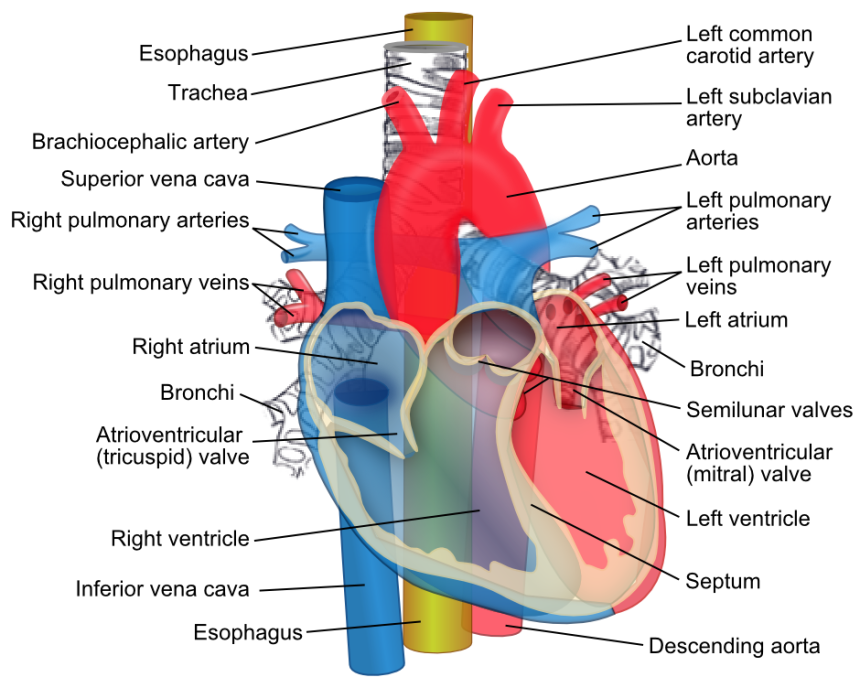Lower Stomach Acid and the Zypan Test
LOW STOMACH ACID AND THE ZYPAN TEST
Adapted from Health Alert November 2000 Vol. 17, Issue 11
 The problem of low stomach acid is so common it should be considered an epidemic. Yet since so much money can be made treating symptoms of low stomach acid with antacids, the problem persists and is getting much worse. For some, the problem is simply a manifestation of getting old. As we age, years of dietary abuse weaken the digestive tract. It becomes less effective and produces less acids and enzymes. Ironically, as the stomach produces less acids, the pancreas produces less digestive enzymes. This contributes to a one-two punch that affects not only the elderly, but people of all ages, including children.
The problem of low stomach acid is so common it should be considered an epidemic. Yet since so much money can be made treating symptoms of low stomach acid with antacids, the problem persists and is getting much worse. For some, the problem is simply a manifestation of getting old. As we age, years of dietary abuse weaken the digestive tract. It becomes less effective and produces less acids and enzymes. Ironically, as the stomach produces less acids, the pancreas produces less digestive enzymes. This contributes to a one-two punch that affects not only the elderly, but people of all ages, including children.
The truth is that you cannot eat “nothing but junk” day in and day out and expect your stomach to treat you well. And you cannot eat like this, end up feeling lousy, and then pop antacids without paying the consequences down the line. This de-acidification of the stomach eventually leads to mal-absorption syndrome, incomplete or undigested foods in the gut, and lack of nutrients in the system. And these conditions lead to the eventual degradation of all the glands and organs. Which in turn results, in disease and the downward spiral of poorer and poorer health.
Signs of Low Stomach Acid
The most common signs of hypochlorhdria (low stomach acid) are bloating, belching, burning after meals, feeling too full, finding food still in your stomach hours after eating, poor and thin fingernails, poor hair quality, falling hair, broken capillaries, and more. If you insist on using antacids to treat low stomach acid, you can end up with poor mineral absorption, vitamin deficiencies (especially B12), parasites, candidiasis, poor muscle tone from inability to digest protein, and a host of other possibilities as the condition worsens. Some of these can include asthma, adrenal failure and exhaustion, hives, diabetes, rheumatoid arthritis, and thyroid problems.
Testing for low stomach acid can be invasive and expensive. Procedures include a full exam by an internist with an instrument inserted into your stomach to measure pH(acidity), hair analysis, stool samples for undigested food, or radiotelemetry with Heidelberg capsules. But in the end, the easiest and cheapest way to test for low stomach acid is the The Zypan Test.
The Zypan Test
If your indigestion is caused by low stomach acid, providing hydrochloric acid, enzymes, and the raw materials to create acids will bring prompt relief. This is where Zypan from Standard Process Labs comes in. It contains betaine hydrochloride, pepsin, and pancreatic enzymes. Start with one tablet per meal and see if you feel better or worse. If you feel the same or slightly better, go to two or three per meal and judge the response.
It is a rare instance that a burning stomach is caused by an ulcer. If the burning or tingling occurs with Zypan, this is the sign that you may have an ulcer or a severe case of gastritis (usually caused by the ramifications of long-term antacid use). With low stomach acid, food stays in the stomach too long and slowly ferments. Food cannot move out of the stomach until the food mass is sufficiently acidic. The sphincter will not allow the food to pass until this occurs. With low stomach acid or antacid use, this can take hours. During this time the food ferments, producing acidic gases, acids, and more. These irritants are what cause most burning, ulcers, and gastritis.
What to Do for Ulcers
Take one to three months to treat and eliminate the inflammation or ulcer. Consider combining you foods more carefully. Eliminate all Pro-flammatory foods. If you need information on this call and make an appointment with Dr. Kimberly Rollheiser- Revilla and get guidance on resolving this issue. Take three or four Gastrex capsules 15 minutes before each meal and at bedtime. Take three Okra Pepsin E3 capsules with each meal. If you have a bad ulcer, drink eight ounces of freshly juiced cabbage juice daily (can be combined with a little apple juice for taste). After one to three months, most ulcers and gastritis will be resolved.
What to Do for Low Stomach Acid
At the end of healing your ulcer or gastritis, you are sill left with the job of treating the cause of the problem (a novel concept in the field of medicine). So you are back to the zypan test. You can also test with apple cider vinegar (two tablespoons in a glass of water). Once you find out that low stomach acid was the cause of your problem all along, treating and resolving the condition is easy. Simply use Zypan while you clean up your diet, get plenty of raw foods (which contain lots of enzymes), use a good form of salt (which is necessary for the production of stomach acids and enzymes), and combine foods more sensibly.
If you discovered along the way that the elimination of wheat (Gluten), milk, or other food items, provided great relief, you may need to eliminate these for a year or longer. And when it comes to salt, I recommend Celtic Sea Salt from the Grain and Salt Society. It costs more, but is worth it. Check your health food stores, or order it directly from them a 1-800-867-7258.
What to Do for Reflux and Hiatal Hernia
If your burning results in reflux, esophagitis, or even Barrett’s esophagus, you must still test and treat for low stomach acid. In addition you must also test and treat for hiatal hernia (which can be nothing more than a weakness in the diaphragm). Since this affects up to 50% of all people over age 60, it is critical. We have information on testing and treating for this common condition.
In most cases, simply correcting the low stomach acid will automatically correct the reflux and even sometimes the hernia. After all, it is the acids of fermentation that reflux back up into the esophagus. When that condition is eliminated, the entire syndrome is halted. When the hernia or diaphragm needs physical treatment, the reflux or burning will not resolve. In these cases nothing but treating the cause will solve the problem. The treatment of hiatal hernia is simple and effective, and can be done with the help of a specially trained chiropractor- Dr. Kimberly Rollheiser-Revilla.
What to Do for Lower Gut Problems
If you find out that constipation, diarrhea, or bloating (especially in the lower abdomen) is still a problem, the cause may be in the lower intestines, liver, or gallbladder. These are problems we have discussed in detail in past issues. However, even with lower digestive tract diseases (gallbladder, constipation, diarrhea, colitis, irritable bowel, diverticulitis, hemorrhoids, mal-absorption syndrome, and more) always test and treat for low stomach acid first. This one problem is often the start of lifelong digestive problems that can extend throughout the length of the digestive tract. All medical treatments ignore the cause and treat the symptoms, making you more sick in the long run. Do not fall for this scam. Instead, treat the cause!
©Copyright 2005 Holly A. Carling, O.M.D., L.Ac., Ph.D.
213 W. Appleway, Suite 10, Coeur d’Alene, ID 83814 208-765-1994

